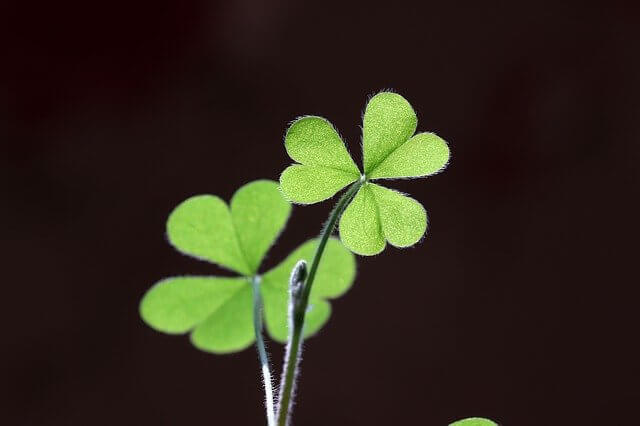
Psst… I have a secret for you. Okay, maybe it’s not a secret, but it sometimes feels like one. Want to make sure you have the luck of the Irish on your side? If so, learn the difference between “shamrock” vs. “four-leaf clover” please.
Put down the green beer and the “Kiss Me I’m pretending to be Irish” t-shirt. It’s time to delve into the details.
Remember:
- A “shamrock,” the traditional Irish symbol, has three leaves, and these three leaves commonly stand for faith, hope, and love. The word “shamrock” comes from the Gaelic word seamrog, meaning “little clover.”
- A “four-leaf clover” clearly does not have three leaves. It has four—yes, I’m stating the obvious—and it’s this fourth leaf that stands for luck. Yet, it’s also this fourth leaf that makes it not a shamrock.
Four-leaf clovers are rare, while three-leaf clovers like shamrocks are in abundance.
The trefoilium family of plants—think clovers and peas—actually gains its name from its three leaves, specifically from the Latin word tres, “three”, combined with folium, “leaf.” Shamrocks are in this family. You’re noticing a theme here: three leaves, not four.
There’s a great story about St. Patrick using the shamrock to explain the Holy Trinity to the people of Ireland, its three leaves standing for the Father, Son, and Holy Ghost; however, the historical record doesn’t quite hold up this connection—or, at least, it doesn’t hold up in connection with St. Patrick himself. But it makes a good story, and that’s something worth holding onto too, as long as you know the facts of things.
Etymology, botany, the history of saints… these are all subjects worthy of exploration. Some answers are complex, but others are easy. The distinction between “shamrock” vs. “four-leaf clover” is a fairly straight-forward one. Much like the question of “St. Patty’s Day” vs. “St. Paddy’s Day,” these are the answers you simply need to know.
Sign up for my monthly writing and editing tips and trivia email newsletter for more like this.